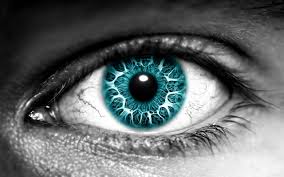It is said that many people believe that babies aren’t truly born good or evil, but they are just blank slates and become good or evil by their experiences growing up. One study however, at the Yale University Infant Cognition Center, has been sweeping the internet, as researchers have found that babies are actually born with some sort of moral code.
According to CNN, The Baby Lab has “been studying the minds and behaviors of babies for decades” (CNN). Researchers such as Karen Wynn have run different tests on infants under 24 months old to see their reactions to good or bad behaviors. One study presented the babies with a puppet show, where one puppet demonstrates good behavior in a certain situation, and then when the situation is repeated, a different puppet exhibits bad behavior. When presented with the two puppets, “more than 80% of the babies showed their preference for the good [puppet]” (CNN). A psychology professor at Yale and spouse of Wynn, Paul Bloom, reported, “even before babies could speak or walk, they judge good and bad in the actions of others because they are born with a rudimentary sense of justice” (CNN). This means that according to research done by Wynn and Bloom, babies are born with “an innate sense of morality, and while parents and society can help develop a belief system in babies, they don’t create one” (CNN).
The Baby Lab at Yale University also hit other websites, as Online Athens actually published an interview done with Paul Bloom about babies moral code. Throughout the interview, Bloom was asked a series of questions about the morality of babies, the first of the questions being “what light do you shed on the ‘moral sense’ of babies?” (OnlineAthens). From the first question and throughout the entire interview, Bloom answers the questions with “I think” and “I believe”. All of his answers as well are theory based on his opinions. This demonstrates that the research he has concluded may be heavily swayed by his opinions that babies are born with some sort of moral code that cannot be changed, which means that his findings may be biased. The only time that Bloom refers to the findings is when he states that, “what we find in our research is all sorts of moral capacities on the part of the babies” (OnlineAthens). Bloom does not elaborate on the actual statistics of his work, which means that the study may have not been conducted very well and the information potentially could be biased towards his opinions.
Also, another source, New York Post, reports the Yale study, and decribes the one trial done in the lab, with the good puppet and the bad puppet, and the finding that the babies preferred they good puppet. This study could not have been very in depth or not repeated enough trials, as the New York Post also describes a study done by psychologist Kiley Hamlin at the University of British Columbia’s Centre for Infant Cognition who conducted a similar trial, with puppets who rewarded for good behavior, or punished for bad behavior. Surprisingly, Hamlin found that “the experiment suggests we’re born with knowing more than right from wrong- we’re also born with a sense of justice. Or at least vengeance” (nypost) as a majority of babies favored the puppet that punished for bad acts.
With these results in mind, and the media hype for the Wynn and Bloom findings, this study could be suffering the file drawer problem, as the one study seems to be the only study currently reporting that babies are born with a moral code, and the Hamlin study being the only one to find that they are also born with a sense of justice. These findings could have been due to chance, and the other studies conducted coming up inconclusive, with a null hypothesis, and then never reported. Also the studies could have been executed poorly, and not conducted thoroughly or had enough trials, as the researchers may have wanted the study to demonstrate what they want to believe, that babies are born with a sense of right or wrong.
http://www.cnn.com/2014/02/12/us/baby-lab-morals-ac360/
http://onlineathens.com/features/2013-11-16/born-way-book-says-babies-are-both-good-bad

















